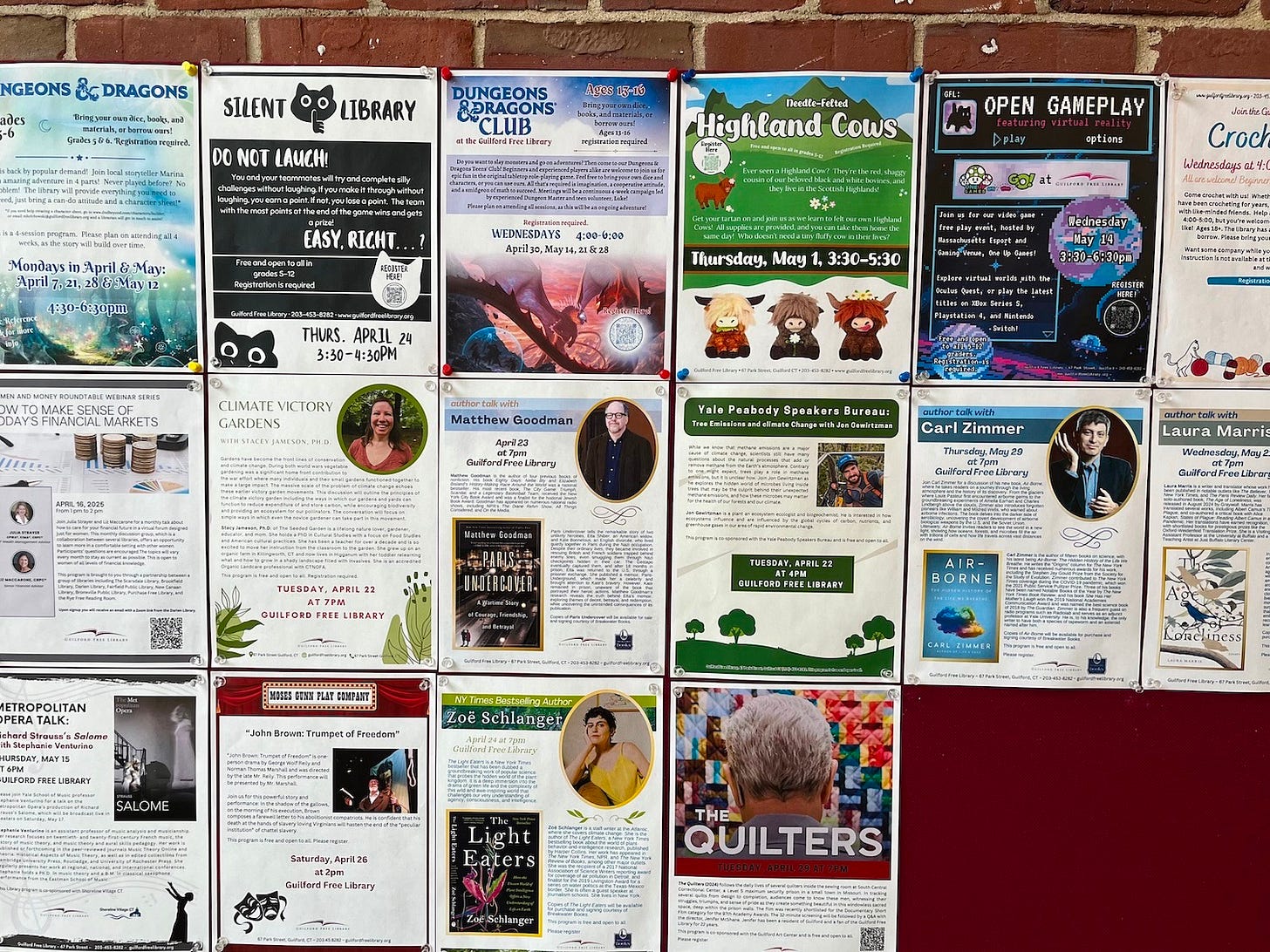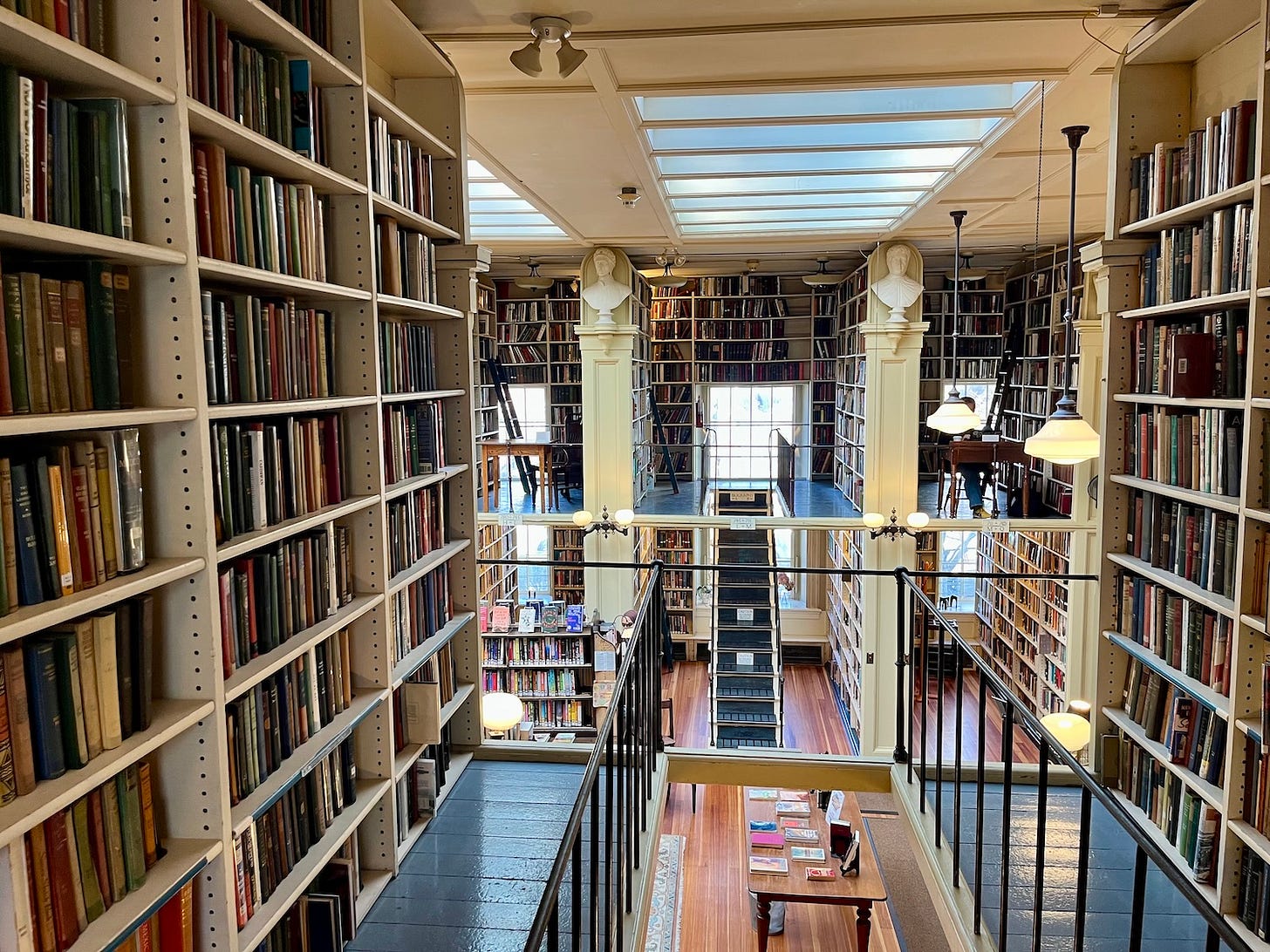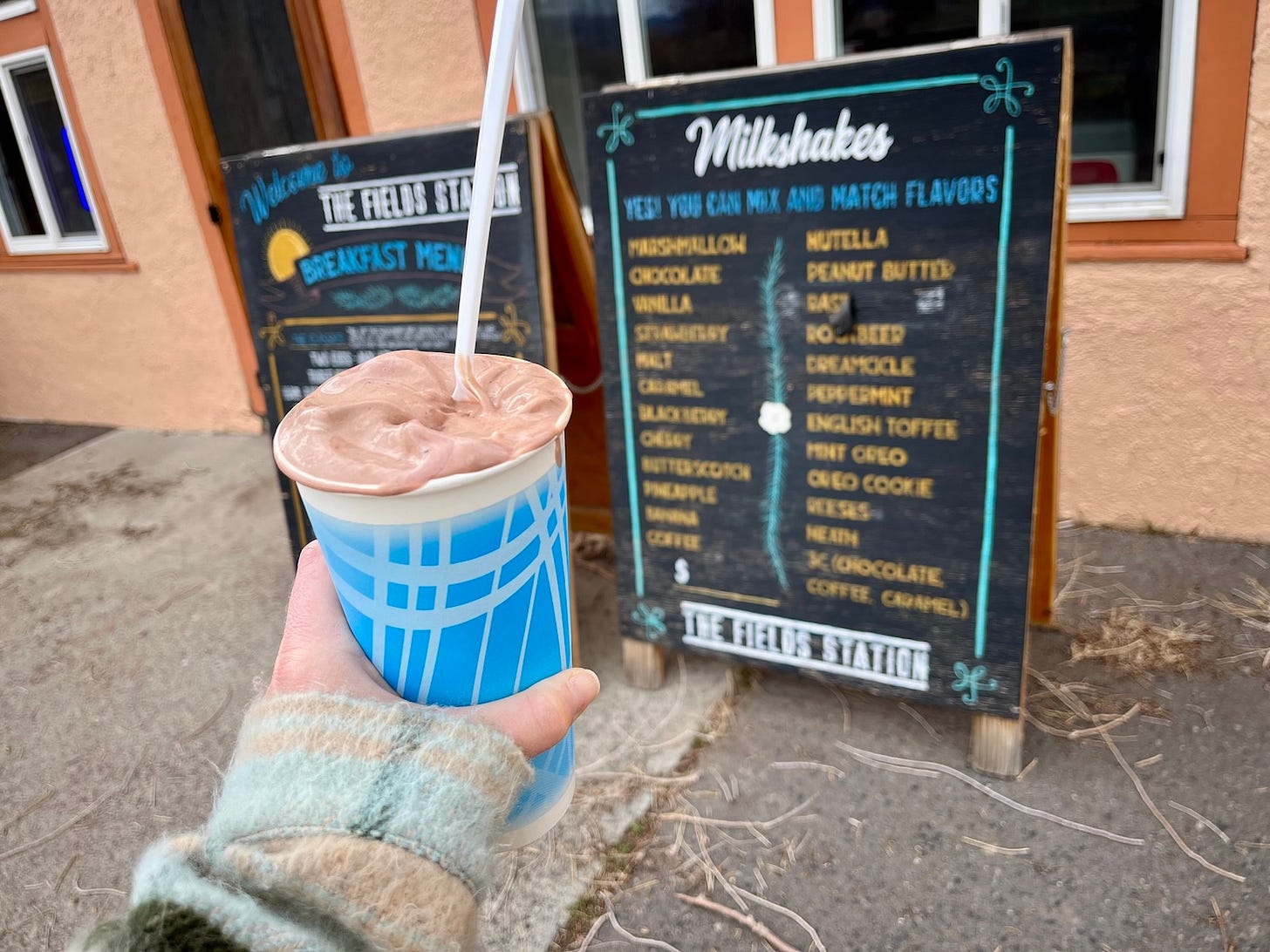31 Things To Do When You're Out of Ideas
all the resources I turn to for story brainstorming + access to my customizable pitch tracker
At the start of last week, I was sure I’d never have another good idea. I was donezo. Swirling news of tariffs and impending financial crisis sent me into a whirlwind of anxiety from which all creative thoughts were blown away. There would never be another assignment, another byline, another paycheck.
By the end of the week, I had an assignment with one of my goal publications for the year and a few pages of my notebook were filled with new story ideas.
There is no hack to this shift. The assignment was something I had pitched months ago! But it gave me the boost I needed to pursue some new ideas.
Unfortunately, this seems to be part of the process when your profession requires a steady flow of original ideas. The motivation and the curiosity evaporate. And then we find them on a walk, in the shower, in a random conversation with a friend. The light shifts. There it is.
Sometimes it’s best to just sit in those foggy moments and let our brains rest. But also, we need to get paid.
In an effort to keep the ideas flowing, I’ve created this list of resources and methods for discovery and inspiration that hopefully lead to good ideas and paid assignments. Some of them are obvious. Some are random or maybe just an excuse to try something new.
Interspersed throughout this list, you’ll find advice from other writers on how they look for story ideas. Thank you so much to everyone who contributed!
I hope you’ll bookmark this page, writer friends. I’ll keep adding to it, and this can be a living document of inspiration to brainstorm, explore, stretch, and search for something new. Add your favorite resources in the comments to share with others! And then go find yourself some stories.
(Paid subscribers, there’s a little something extra for you at the end.)
1. Read the local paper.
Zoom in on your town or neighborhood to consider hyperlocal issues that might be reflective of larger trends. Or pick a national news item and look for the local example. Who could you reach out to in your own community who might be living a microcosm of a major headline?
2. Review new and upcoming book lists.
Is a much-anticipated novel set in a place you know well? Is a nonfiction book coming out on a topic you love? Book releases can be news hooks for a wide range of stories.
3. Work at a coffee shop you’ve never been to. Read the bulletin board.
I love writing in coffee shops. Trying a new spot is a fun way to jostle my habits and thought patterns and see what comes up.
While you’re at a new-to-you cafe, check out the bulletin board—those windows into the soul of a community where dog walkers, yoga instructors, and open mic hosts bravely tell the world what they’re up to.
4. Check out events at your local library.

Speaking of bulletin boards, my local library has one that’s full of upcoming events and I’m always delighted by the variety. Most libraries regularly host events with authors and experts of all kinds, and these tend to be small enough to snag some one-on-one time with the speaker—maybe even an interview.
5. Look at trade publications
If you don’t already write for trade publications, then there’s a good chance you don’t read them. These industry-focused outlets can be dense and dry—but not always! And they’re packed with insight and updates about really specific things that could be repackaged for a more general audience.
Check out the trade publications from industries you’re unfamiliar with to learn something completely new. There are so many of them!
6. Type “Special:random” into the search bar on Wikipedia.
See what comes up!
7. Reread an old favorite from a writer you love — or your own work.
If a story moved you once, go back to it and see where it takes you today.
Rereading your own work can also be an interesting experiment in how your opinions, knowledge, and voice have evolved.
Could you write about something you covered five years ago? What’s changed?
“I read writers whose voices put me in the mood to write, scour Reddit communities centered on my interests, and read recent stories in publications I'm targeting.”
—
8. Find your spot at the library.
Going to the library is almost always a good idea.
If you’re feeling self-doubt about your ability to come up with other good ideas, go stand in a long aisle packed with all those different stories and expertise, and consider the fact that at some point, every single one of those authors thought they didn’t have any good ideas. And then they wrote a book.
If you are someone who aspires to write a book someday, find the section and slot where your last name would slide into the shelf.
How would your book speak to the titles sitting next to it?
“Sometimes I start with the world (a place in the news, a social issue, a topic). Then narrow to finding a compelling subject or real life “character" in that world. Then narrow further to the journey of the character to tell the larger story about the world.
Other times, writers might start with a person and widen out to find the social dimension—the answer to "why are we telling this story now,” which you often will also find in the nut graf of a story pitch.
I was intrigued by Ruby Cramer’s approach last year, starting with an emotion and looking for stories from there, which immediately gave each piece a baked in theme.”
—
, author of The Death Class9. Revisit old pitches.
Sometimes I get really excited about an idea, send it to an editor, and then forget about it. Editors have so many reasons for not responding to pitches, and most of them have nothing to do with the quality of the idea.
Go back to those pitches you gave up on or forgot about. Can you rework the angle for other publications? Is there any news related to the story since you first pitched?
“The problem I usually struggle with is, are any of my ideas original, truly mine, something I have the authority to investigate, who the fuck cares what JD Shadel has to say?! The way I tackle that is putting myself in a situation where I’m not “trying” to ideate. When I’m stuck in that loop, I go outside. I sit somewhere I can people watch. Watching people’s shoes as they walk by a cafe and thinking about trends in shoes. You get the idea.
If you’re too “logged on” to social media, all your ideas will start to resemble the ideas you’re seeing there. And that’s poison to ideation, in my mind. Log off! Pop into a bookstore and browse a section that sounds boring and find something interesting. Buy a book. Take a bookmark from the shop. Go to the cafe across the street. Don’t read the book if you don’t feel it. Or read the last page. Free write into a journal all the thoughts that cross your mind, good and bad. Just write.”
— JD Shadel, founder of ESC KEY .CO
10. Look at the latest scientific studies.
Even if you don’t consider yourself a science or environmental writer, sites like Science Daily, SciLine, Nature, and EurekAlert are really useful in finding new studies that are shedding new light on our world.
11. Peruse a map of a place you know well.
The map on your phone will get you where you need to go, but it will rarely lead you to something surprising. (Unless you’re really bad at following directions.)
Paper maps, on the other hand, are full of details we’d never notice on a drive or a walk unless we were were scanning the space beyond our route. That’s why I really love a map of a place I know pretty well. Unfold one and you might find an unfamiliar pocket of place containing a story idea you’d never noticed before.
12. Check out local activism groups.
Local activist groups are constantly responding to the latest news and formulating responses and actions to the world’s most urgent issues. Subscribe to their newsletters. Check in on their upcoming campaigns. Follow them on social media. Activists are on the front lines of so many important stories, and their perspective can be an incredibly inspiring and impactful.
Years ago, I went to a few meetings with the 350PDX Forest Defense team and those talks inspired this article about small family foresters trying to survive as Wall Street investment firms bought up land for logging.
“My biggest trick is just to mute my ego. I tell myself over and over again that no one will read the bad sentences I'm about to write. That even if I have to plod my way through to the next moment of excitement--be that several pages or just a few paragraphs later--I will get there eventually.
“If I'm really staring at a truly blank page, I borrow an activity from the writer Summer Brennan who I first heard talk about "five things" essays. The idea is you make a list of five things, start writing about the first until you run out of steam and then move on to the next. Some days the five things are clearly connected, sometimes less obviously so. I like this for its simplicity and the built-in permission to move on without completely abandoning writing time altogether.”
— Amanda Parrish Morgan, Executive Director of the Westport Writers’ Workshop
13. Get excited about this list of publications that pay $1/word.
I open up this list of 200+ publications that pay $1/word at least once a week. Thank you THANK YOU Natasha Khullar Relph of The Wordling for compiling this incredible resource.
It’s great to know who is paying reasonable rates these days. But even when I don’t have a story in mind, I often scroll through this list to find ideas based on the briefs on what each publication looks for. Sometimes, all a half-baked idea needs is some instructions on how and what to pitch. Then you can roll out your idea dough and shape it with the cookie cutter of a magazine’s guidelines. (Sorry. I’ve been baking lately.)
14. Bake bread.
Speaking of baking… I think about this essay by Lynne Curry every time I sprinkle flour on my counter.
“According to psychologists, the baking process induces a sense of calm and may even promote creativity,” she writes. “For me, there is a deep benefit from periodically getting back into my body to focus on a manual task. When good writing often feels like an unguided trip into deep space, especially the early stages, the feeling of dough in my hands is grounding.”
15. Take a long walk or go for a run with no music or podcasts.
I swear by this. (So many people do.) Creative ideas come to me most often when I’m lost in a combination of movement and my own thoughts. If you can avoid bringing your phone, do that. Bring a little notebook instead.
“I read the notice boards at coffee shops. I stop to read the roadside historical markers. I used to have a bunch of subject-matter Twitter lists, and I belong to obscure Facebook groups in random cities just to see what people are talking about. I read all sorts of trade and advocacy group newsletters, and I subscribe to a bunch of local news rundowns. All help me see trends and patterns. Occasionally, I'll email people I've interviewed before to ask what's new since we last talked.
“When I'm feeling uninspired, I know it's time to get out of the house or my office. I take a notebook and eavesdrop on people at coffee shops and cafes, or I strike up a conversation on the bus. Going for a hike or a long walk, alone, without a podcast in my ears, can also surface connections. All that walking helps me render clarity and narrative out of the material I'm always absorbing. I also recommend going on a photo safari in search of colors or specific themes—at a minimum it's something to post on Instagram. Or I take one of my real cameras out for a spin to see what captures my eye.”
—
, author of Windfall15. Browse (and subscribe to!) these newsletters.
My ideas often come to me publication first. I see that someone is looking for a particular type of story, and I rework whatever random ideas have been floating around my brain into something that could work for them. So I love a newsletter round-up of pitch opportunities. Study Hall, The Freelance Beat, and Be a Travel Writer are my favorites.
16. Take a creative detour.
The next time you’re walking or driving somewhere, pick a stop that’s a little out of the way. Pick a book store, a market, a mural, or whatever sounds interesting.
Another approach: Google “best/worst/weirdest/quietest _____ near me” and go find that.
17. Draw a treasure map to your life.
I recently pulled out an old atlas to trace my road trip around Oregon. I drew big circles around all my stops and made some notes directly on the map. Just seeing that visual gave the trip a shape I hadn’t yet considered. You can go bigger and draw the route you’ve taken through your whole life, connecting all of the places you’ve called home or traveled to. Mark significant sites along the way that led you to where you’re at. Besides a location, what is that map leading you towards? What would it be like for a stranger to use the treasure map of your life as a travel guide?
18. Try a new medium.
My daughter is really into horses right now. Lucky for me, that’s one of three things I can draw. I love sitting with her at her little drawing desk, our palms pressed to paper, using all the colors to create something together.
In an essay for Lithub, Kiley Blense reflects on how a painting practice made them a stronger writer:
“Crafting writing that seems alive is much like mixing paints, or drawing and re-drawing until you land on that one crucial line. The drafting process is all about fitting words into sentences and sentences into paragraphs like puzzle pieces until you find the ones that fit, the ones that can summon something lucid and precise in a total stranger’s mind. Writers, like artists, work to distill something tangible into the fewest necessary strokes.”
You don’t have to be a talented artist to take advantage of this method for expanding one’s thought processes. Pick something tangible: clay, paint, old magazines to collage, whatever. And let your hands and your mind stretch in new directions.
19. Ask ChatGPT.
Just kidding! You don’t need that!
19. Read a page of the dictionary.
There’s a reason so many pieces of creative nonfiction have a moment of etymology in which the writer uses the origin and evolution of a word to dig deeper into an idea. It’s almost always an interesting approach. Start with the dictionary. Find a word whose definition is a little different than how it lives in your mind. Why? How? Research the roots, and write about it for five minutes. See what sprouts.
20. Make a list of your fears.
It doesn’t feel good to sit in our fears. Which is precisely why, as writers, we probably should. Because the best, most honest personal writing often comes from digging through he hard stuff.
But you don’t have to mine your trauma every time you feel uninspired. Instead, make a list of things that freak you out. Heights? Horror movies? The thought of running out of snacks on a long road trip?
I love
’s approach, in which she sends herself on assignments that make her uncomfortable, like going to a rage room or cuddle party. “I go to places that I, Joy Sullivan, wallflower, poet, and anxiety expert extraordinaire would never go,” she writes in the opening post to this series. “Then I write about the complicated emotions that come in those unexpected places.”Where might your fears or discomforts take you? Might it be interesting—fun, even— to find out?
21. Check in on all those random holidays.
National Dueling Dianosaurs Day is the first one I saw on this website, so clearly this a treasure trove.
But really, lots of publications are interested in holiday hooks, even if they’re a little random or silly. The stories behind how these days came about can also offer rabbit holes worth exploring.
22. Dig into episode notes of a podcast.
If a podcast episode sticks with me, I’m always curious about the episode notes, which provide links to their source materials and anything they referenced in the show. Looking at these resources can lead to your own interpretation of the topic or new bits of information worth running with.
All the links from the episode of You’re Wrong About… The Chicks vs. The Iraq War could keep me busy for days.
Keep reading with a 7-day free trial
Subscribe to Wild Writing to keep reading this post and get 7 days of free access to the full post archives.




